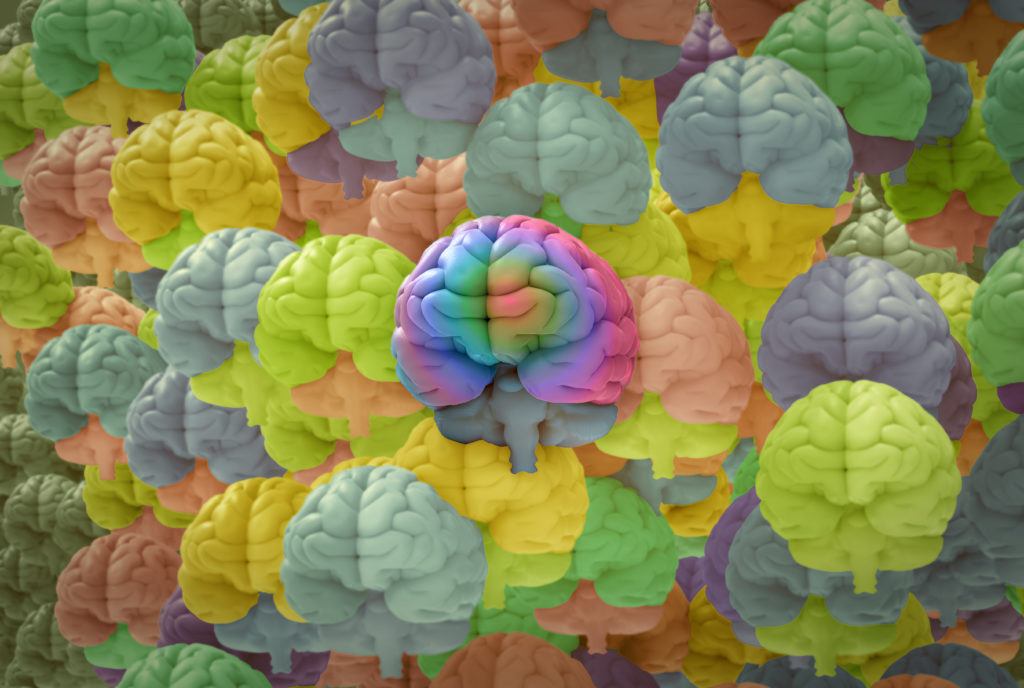
Although the qualitative effects of psychedelic drugs are thought to be mediated by the receptors they bind to in the human brain, the mechanisms by which psychedelic experiences occur are not well understood. The prevailing paradigm suggests that they are primarily mediated by the 5-HT2A/2C receptors,1 with Dr. David Nichols having noted in a 2016 review paper that all known serotonergic psychedelics are agonists of these two receptors.2
Despite shared 5-HT2A/2C activation, different psychedelic drugs can produce markedly different qualitative experiences. These differences are often explained by suggesting that variations in the set and setting result in qualitative diversity, or that different drugs may prompt distinct intracellular signaling pathways.2
Dr. Thomas Ray posits that the current paradigm overemphasizes the 5-HT2A receptor’s role in producing psychedelic effects. In considering the potential contribution of diverse neural systems to the psychedelic experience, Ray proposes a set of hypotheses centered around the concept of “mental organs.”3
The Mental Organs Hypothesis
Ray defines a “mental organ” as “a population of neurons that express a specific modulatory receptor (e.g., serotonin-7, histamine-1, alpha-2C, imidazoline-1).”4 In the same way that organs such as the heart and lungs serve distinct physiological functions, Ray posits that mental organs mediate distinct domains of human experience via their characteristic receptor(s). Because a single neuron can express a wide variety of receptors, mental organs may lack the physical cohesiveness of other organs in the body, as a single neuron may participate in multiple mental organs.5
Ray arrived at the mental organs hypothesis using a natural history methodology, which involves observing patterns that occur in nature and forming hypotheses from such observations.4 A natural history approach does not need to be initiated by a hypothesis or question, and often precedes controlled clinical studies, making it productive in exploring a domain that is not well understood, such as the human mind.
Ray began by synthesizing two data sets: the molecular affinity data of 22 psychedelic drugs and published reports of subjective experiences of those drugs.4,6 The affinity profile of a drug consists of which receptors the drug binds to and how strongly it binds to them. From evaluating patterns in the affinity profiles and reported qualitative aspects of each drug, Ray developed the mental organs hypothesis.
The Functions of Mental Organs
According to Ray, mental organs may serve a variety of distinct functions, including providing conscious mental space, managing which mental organs are expressed in consciousness, and providing the contents of consciousness.5 For example, Ray hypothesizes that mental organs associated with 5-HT7 receptors mediate conscious mental space, creating the stage on which consciousness plays out. The 5-HT2 mental organ hypothetically mediates which other mental organs enter consciousness, like a director determining the players on the stage. In this analogy, the “players” are mental organs that provide the contents of consciousness, both cognitive and affective, such as serotonin-1 (5-HT1), Beta-2 (β₂), and imidazoline-1 (I1).5
5-HT2 and the Breadth of Consciousness
Ray proposes that the 5-HT2 mental organ acts as the “hands of the mind,” holding other mental organs in consciousness.4 Hypothetically, in order for a content mental organ to enter consciousness, its receptors must be activated in conjunction with 5-HT2 receptors. This posits that the 5-HT2 mental organ would allow for the dramatic psychedelic effects from other mental organs, but would not produce the effects alone, undermining the current paradigm that suggests 5-HT2 receptor agonism is solely responsible for psychedelic experiences.
The mental organs model offers an explanation as to why “classic psychedelics,” such as psilocybin, LSD, and DMT, have qualitatively distinct characteristics, despite their shared agonism of the 5-HT2A receptor.1 Namely, these drugs bind at a variety of other receptor sites as well, in distinct ways, suggesting that different mental organs could be held in consciousness in varying proportions, producing phenomenologically distinct experiences. The particular “flavor” of a drug may correspond to the receptors it binds to, with stronger activation of a given receptor resulting in a stronger proportion of that “flavor.”4 Furthermore if a “flavor” is too weak, it may not be perceptible in the overall “taste” at all. Using this analogy, the 5-HT2 organ would not provide any flavor alone but would allow for the full breadth of flavors.
The Primer/Probe Model
As the mental organs hypothesis is in its infancy, thorough clinical testing is needed to assess its validity, and one proposed method for doing so is the primer/probe model.7 In this method, a “primer” is a drug that selectively activates 5-HT2 receptors (such as DOB or MEM), or 5-HT1 and 5-HT2 receptors (such as DOET or 2C-B-fly), whereas a “probe” is a drug that selectively activates a receptor that corresponds to the mental organ one wishes to bring into consciousness. If the mental organs hypothesis is valid, the primer/probe method should be able to produce specific psychedelic effects by combining two drugs that are not psychedelic alone.
For example, Ray suggests the combination of a primer with the blood pressure medication rilmenidine should reproduce some qualitative aspects of MDMA, as MDMA and rilmenidine both share a strong affinity for I1 receptors, which hypothetically corresponds to the mental organ providing the strongest element of MDMA’s “flavor.”7 He cites passages from chemist Alexander Shulgin’s archive of phenomenological reports that describe qualitative experiences similar to MDMA which were prompted by the use of a primer in conjunction with rilmenidine.4 Although these reports are anecdotal, they suggest the primer/probe method may be productive in testing the mental organs hypothesis.
Conclusion
The prevailing 5-HT2A paradigm suggests that 5-HT2 receptor activation is the mechanism responsible for psychedelic effects, yet fails to fully account for the qualitative diversity of psychedelic drugs. The set of hypotheses proposed by Ray may offer greater explanatory and predictive power than the current paradigm, explaining the qualitative diversity of various psychedelic drugs. As such, the mental organs hypothesis warrants further testing to determine its potential utility for psychedelic science.

Very interesting. Have any empirical tests of this hypothesis been performed?